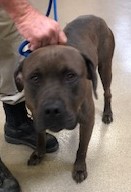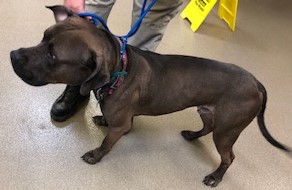

We all love spending the long, sunny days of summer outdoors with our furry companions, but hot weather can prove dangerous. Dogs are not good at keeping themselves cool, so providing protection for our pets in hot weather is critical.
Heatstroke
Heatstroke is a serious problem for pets. Heatstroke occurs when the body’s temperature exceeds a healthy range, and it can be fatal. Seek emergency veterinary care if you observe any of these signs:
Death Trap
We hear about tragedies when babies are left in vehicles on hot days, but heatstroke, brain damage, and even death is far more common with pets left in hot cars. Even a few minutes in a car on a hot day (even with the windows cracked) can be deadly. Research shows that the interior temperature can rise 20 degrees in just 10 minutes, even on cooler days. On a 90-degree day, the inside temperature can reach a sweltering 125 degrees in a half hour.
Pets can’t perspire like humans to cool themselves off via evaporation, so they must pant to cool themselves. If the air is too hot, then panting has little cooling effect, and the dog quickly overheats.
It’s also a bad idea to let your dog ride in an open pickup truck in hot weather, since truck beds are often dark colors, which get very hot.
The Long, Hot Summer: Cooling Tips
Outside Pets
Inside Pets
Outside Activities
Hair and Heat
Grooming dogs can help keep them comfortable as the heat rises, but never shave your dog—the layers of a dog’s coat protect the dog from overheating and sunburn. Dogs with bald patches, short coats, close cuts, or Nordic breeds, who are prone to auto-immune–related sun diseases, may need protection from the sun. However, be sure that any sunscreen you use is labeled specifically for pets. White cats can get sunburned if they lie in the sun too long, even if they stay indoors. Brushing cats more often than usual can prevent problems caused by excessive heat.
Risky Business
Remember that younger, older, overweight, or thick-coated pets, and those with health issues are more likely to become dehydrated or ill from heat exposure. Short-nosed animals (such as Pugs, Bulldogs, Boston Terriers, Pekingese, Boxers, Shih Tzu’s, French Bulldogs, and Persian cats) are less tolerant of heat and are especially at risk of overheating. You should keep a close eye on your pet when it’s hot, no matter what breed, age, or state of health.
A little empathy goes a long way to protect our pets in summer. If it’s too hot for us to stay comfortable in the car, in the yard, or on a walk, it’s even hotter for our furry friends. Our pets rely on us to protect them and keep them comfortable and safe, all year round!
COVID-19: Include Your Pets in Planning
Please click here for your Pet Care Plan.
With the number of diagnosed cases of COVID-19 increasing daily in the County, it is important that people make a care plan for their pets and livestock should they become sick and need to leave their home for treatment.
“While Tulare County Animal Services remains dedicated to the welfare of both the animals and people of the community and continues to respond to urgent calls for service, the animal shelter does not have the ability to house a large influx of animals. We are urging the public to create a care plan for their pet in the unlikely event that they were temporarily unable to care for them.” –Cassie Heffington, Animal Services Manager, Tulare County Animal Services
To develop a pet care plan, pet owners are encouraged to:
In the unlikely event that you are temporarily unable to care for you pets, having a good plan ahead of time will help provide you with peace of mind, knowing that they will continue to be well cared for in a comfortable environment.



Choco has been deemed a dangerous dog and a public health concern. Any residents who think they know the whereabouts of the animal are asked to contact Tulare County Animal Services. Click here to contact Tulare County Animal Services.